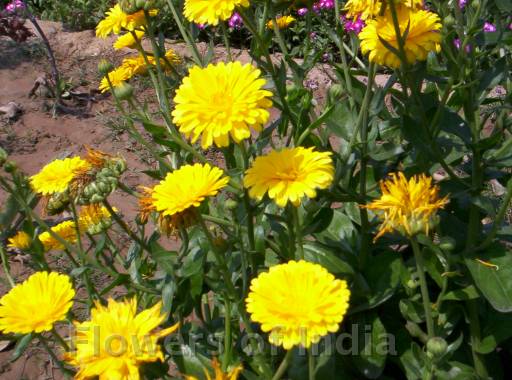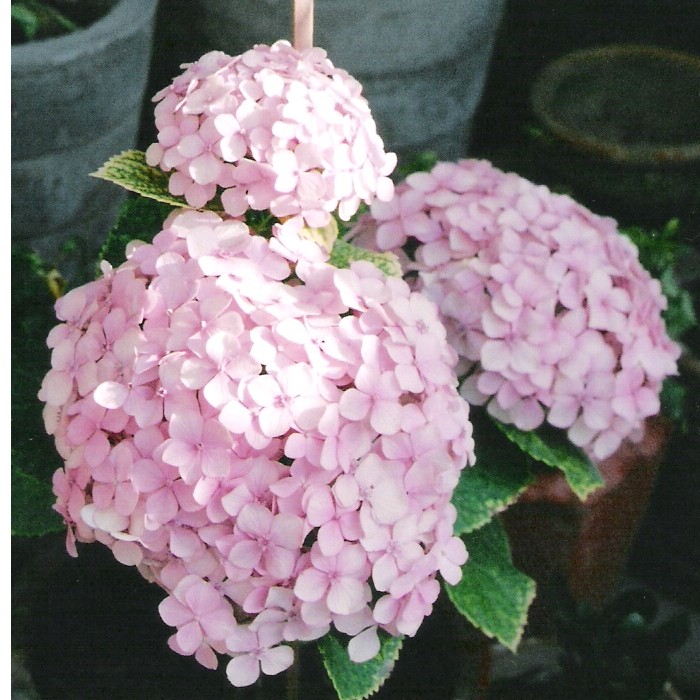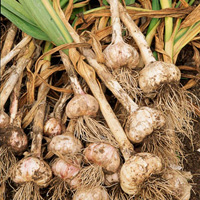


SMALL GARDENS
Gardening in small spaces is generally overlooked in garden design manuals. Garden design is often presented as a list of principles or rules and illustrated on a grand scale. Most of us do not have acres of land on which to carefully calculate the width versus length of our perennial borders. Many of us don’t have the time or the inclination to undertake the maintenance these acres of gardens would need.
Gardening in a small space has its limits, but it need not be limiting. In a small garden, the gardener can pay attention to detail. You can keep on top of maintenance, while still having time to sit and enjoy your small garden. In fact, many small space gardens are designed around entertaining and sitting areas, rather then the need to nurture plants.
Whatever your reasons for having a small garden, there is no reason it cannot be a well designed show stopper. Virtually any plant or garden style can be worked into a small garden space. The principles of good garden design still apply, but you’ll need to tweak them slightly.
Small Garden Design Challenges
The entire garden can be viewed as a whole. Some small garden spaces will be able to accommodate a hidden turn around a path or even be divided into garden rooms, but for the most part, small gardens can be taken in whole, in one look. This means that, more than ever, your garden will be viewed as a composition.
Limited space means you are going to have to make choices. You won’t be able to grow every plant you love. You will need to curb your inclination to buy a plant on impulse and assume you’ll find a place for it.
Color should also be limited, to give your small garden cohesion. Less is more. Cooler colors will make the garden appear larger. You can compensate for the limited color pallette with a variety of textures. The textural contrast will help blend the plant material and allow the garden to flow.
Every plant or feature will need to serve a purpose. There is no room for wasted space or underperforming plants. Plants should offer at least two seasons of interest.
Small Garden Bonuses
Design can be easier when you can take in the whole picture at once.
It takes less plants to make a dramatic effect.
Gardeners get to know every space and plant in a small garden. Any plant that is out of place or not thriving can be spotted and corrected quickly.
Small gardens lend themselves to being enclosed. You may not want to install a stone wall, but an evergreen or flowering hedge will give the illusion of a secret garden. A simple low boxwood edge transforms a small garden into a formal garden. Hardscaping and fencing enclose and define a space for entertaining or children’s play.
A small space garden lends itself to personal expression. Smaller gardens are extensions of your home and speak volumes about the sensibilities and tastes of the gardener. And if those tastes and sensibilities should change, it’s much easier to rework a small garden.
The difficulty in choosing plants for your garden is cutting down the list of plants you love to the list of plants you will use. This is even harder with a small garden. Try to avoid this challenge by creating a framework for plant selection, before you begin your list.
What will influence your decision
Budget Constraints: I put this first because it is something to consider in any garden design. A small space garden should cost considerably less than its larger cousins, but there is still an expense. Don’t forget to budget for any soil you must bring in or amend. If you have your heart set on expensive specimen plants, you may want to create your garden in stages, over a series of years.
Pre-existing Plants: With the exception of trees, it is usually easier to remove pre-existing plants than to design around them. You can save the plants to incorporate into your design, move them to another area or give them to a grateful gardening friend. However there will be times when you primary interest is in complementing an existing planting, whether a favorite tree, a hedge or a row of peonies. If that is the case, you are going to have to be very strict with yourself.
What types of plants will survive under the trees shade and over its roots?
Will you need to remove part of the hedge to make room for the garden space?
Proportion: Small space gardens still need to have balance. The rule of thumb for garden borders is that the width be no less than 1/3 the length. But small borders tend to look better with at least a 1 to 2 ratio. A 6 foot border that is only 2 feet wide doesn’t give you much space to play with depth. 3 or even 4 feet makes the border look less like an edge. Better still, use irregular shapes with curving lines. The space itself become interesting and the size diminishes in importance.
The Basics: Sun Exposure: You’ve gone through all the effort of a site analysis for a reason. To know what plants will thrive in your garden. So now it’s time to pull out that list of site conditions and see what plants suit your site. You’ll have to be tough with yourself now or you’ll be making work and regrets for yourself later. You can change your mind about color or style, but a plant that isn’t hardy in your garden location is going to be an annual. And plants that are suffering from too little or too much sun are going to attract all kinds of problems.
Your Gardening Style: Style here can mean a preference for pastels over hot colors or a theme, such as fragrance or an actual style, like cottage or woodland gardens. You’ll have more leway here than other areas, but since your space is limited, every plant counts. You may love red poppies, but they are going to become the focal point in your pastel garden. When choosing plants for style, it helps to group your plants. This way you can see the sore thumbs. Ferns, pulmonaria and Solomen’s Seal will look lovely together. Primrose may suit the site conditions but the loud colors may be too jarring for the look of a woodland garden. Or not.
Maintenance Requirements: Since this is a small space garden, maintenance will be less intensive. But be honest with yourself about what you are willing to do. Your garden may look good initially, but many perennials need to be divided every few years or they will start to die out or perhaps squeeze out their neighbors.
Garden Size: Obviously the smaller the garden space, the less plants you can have in it. This is especially true if you choose to use a large, focal point plant. A small space will look cluttered fast if there is too much diversity. Just think of how your home feels when toys and clothes are strewn all over the place.
Color Preferences: Limit your plant choices to 2-3 colors., maybe even only 2-3 different types of plants. If you start by selecting only 3 different plants. You’ll probably want at least 3 of each, so that’s already 9 plants. Play with positioning them in the space and take it from there. You can always add more.
Quantity: How many of each plant depends upon the size of the space and the width or spread of the plant. There are two schools of thought about how densely to plant a new garden. If you want your garden to look mature and full its first year, you will need to space young plants more closely or buy larger plants. You will get an immediate impact, but you will also need to begin dividing sooner. If you have the patience to allow your garden to fill in slowly, you can leave room for the plants to grow into their new home and fill in temporarily with annuals.
Average Spacing Guidelines:
- 6- 12" spread - 2 plants per sq. ft.
- 12 - 24" spread - 1 plant per sq. ft.
- Larger than 24" spread - 1 plant per 2 sq. feet
Texture & Form: Unlike color, you will want some variety in texture and form, to give the garden depth. And with only a handful of plants, look for plants with long lasting appeal. Great foliage, perhaps variegated, colored or lacy, and a long season of bloom. You may be able to get away with a sequence of bloom if you include spring bulbs.
Making the final choices
There really is no final choice, since gardens are never finished. But try to be as realistic as you can. If it helps you to visualize your garden, sketch it out on graph paper. This may be the best route to go, but many gardens would never get planted if we had to wait for the designer to put it on paper first. Some garden designers simply like to combine colors, using catalog photos of even paint chips. It works in interior design, why shouldn’t it work outdoors?
Just make sure that most of your plant choices fit of the criteria you’ve outlined and the growing conditions you have to offer. Try not to squeeze in too many different plants and you’re small space garden should look and grow just fine.

